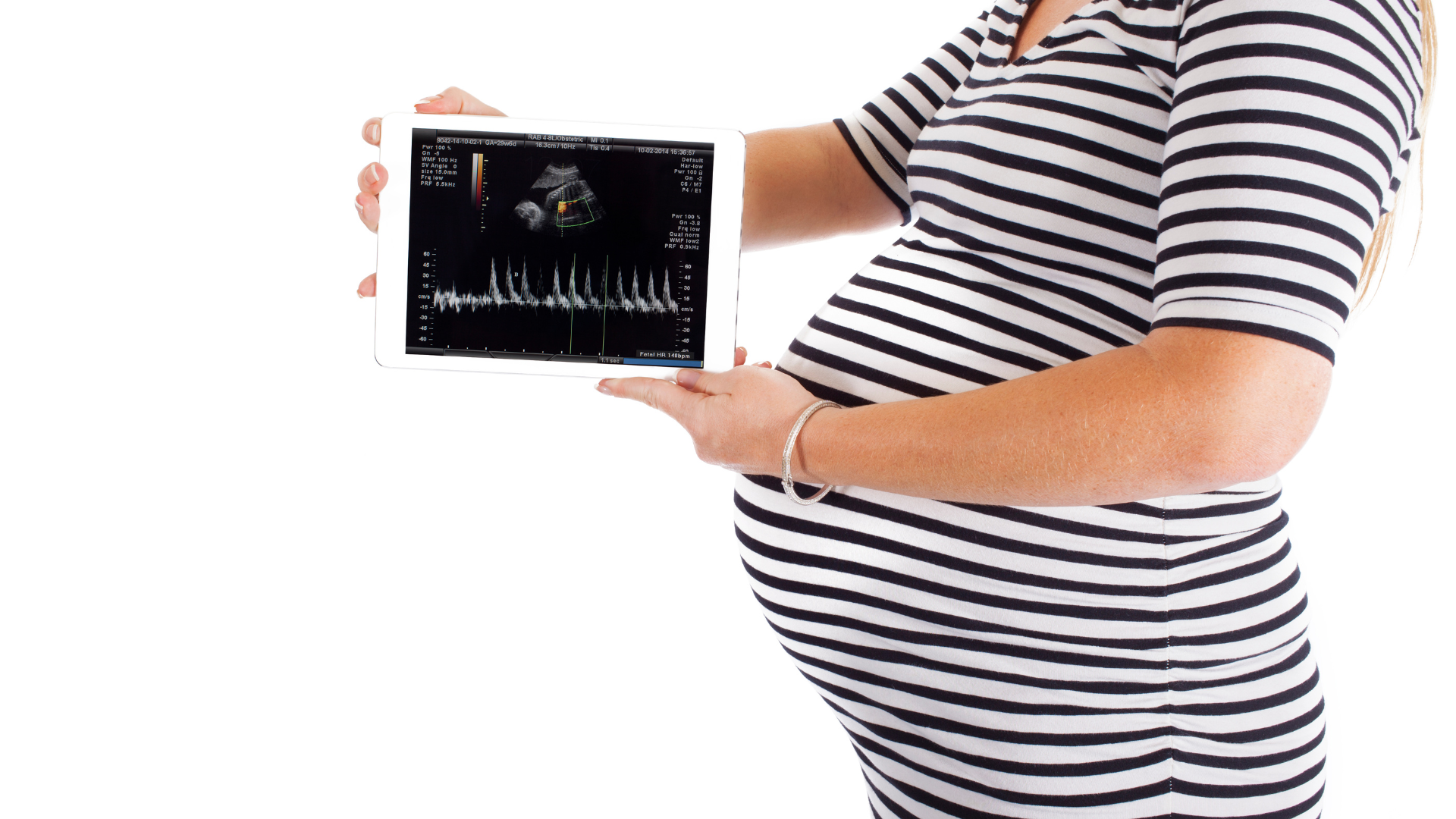
Fetal Heart Monitoring
Fetal Heart Monitoring
Electronic fetal heart monitoring is done during pregnancy, labor, and delivery. It keeps track of the heart rate of your baby (fetus). It also checks the duration of the contractions of your uterus. Your baby's heart rate is a good way to tell if your baby is doing well or may have some problems.
Two types of monitoring can be done: external and internal.
External monitoring
You may have external monitoring at different times during your pregnancy. Sometimes it's done during labor.
External monitoring can be done by listening to your baby's heartbeat with a special stethoscope. More often, it is done using two flat devices (sensors). They are held in place with elastic belts on your belly. One sensor uses reflected sound waves (ultrasound) to keep track of your baby's heart rate. The other sensor measures how long your contractions last. The sensors are connected to a machine that records the details. Your baby's heartbeat may be heard as a beeping sound or printed out on a chart. How often you have contractions and how long they last may be printed on a chart.
External monitoring is used for a nonstress test. This test records your baby's heart rate while your baby is moving and not moving. A nonstress test may be done with a fetal ultrasound to check the amount of amniotic fluid.
External monitoring is also done for a contraction stress test. This test records changes in your baby's heart rate when you have contractions. It may be done to check on your baby's health if your baby does not move enough during a nonstress test. It may help predict whether your baby can handle the stress of labor and vaginal delivery.
Sometimes external monitoring is done remotely. This is called telemetry. It allows you to be checked without being hooked up to a machine. At some hospitals, the sensors can send the details about your baby's heart rate and your contractions to a remote monitor. This monitor is usually at a nurse's station. Using a remote monitor allows you to walk around freely.
Internal monitoring
Internal monitoring is done during labor. It can be done only after your cervix has dilated to at least 2 centimeters (cm). Your amniotic sac must have ruptured as well. After it is started, it is continued until delivery.
For internal monitoring, a sensor is strapped to your thigh. A thin wire (electrode) from the sensor is put through your cervix into your uterus. The electrode is then attached to your baby's scalp. Your baby's heartbeat may be heard as a beeping sound or printed out on a chart.
A small tube that measures contractions may be placed in your uterus next to your baby. The strength and timing of your contractions is often printed out on a chart.
Internal monitoring is more exact than external monitoring for keeping track of your baby's heart rate and your contractions.
Fetal Heart Monitoring in Schenectady, NY
Fetal Heart Monitoring in Clifton Park, NY
